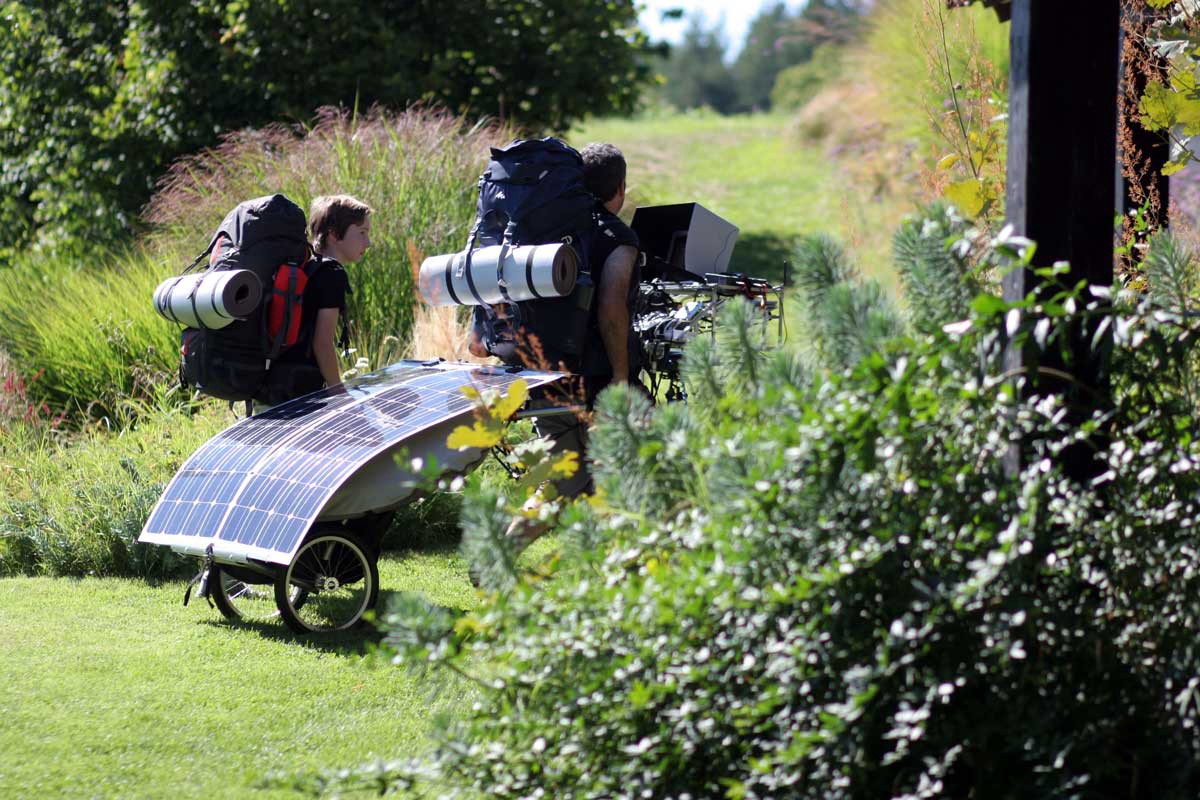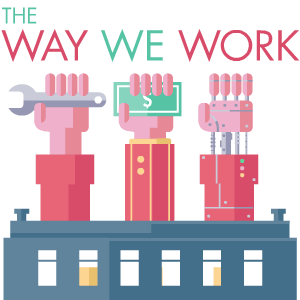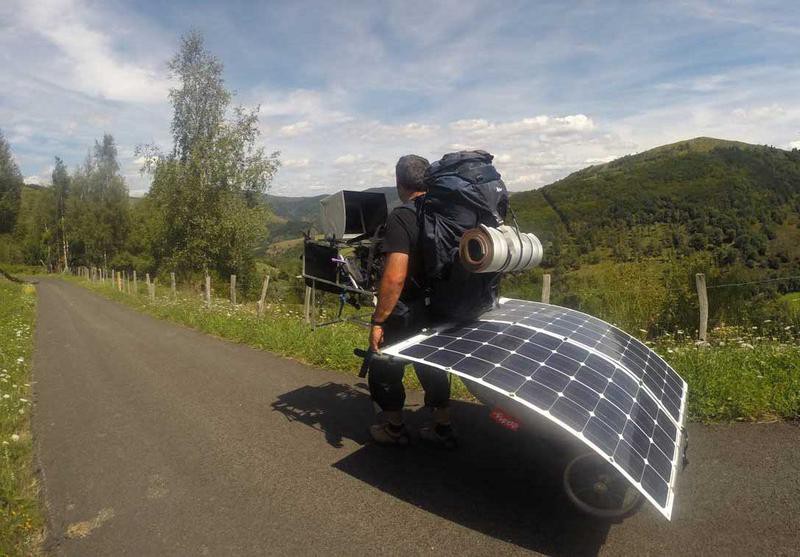

Like many modern humans, you may be reading this at a desk, tethered to your desktop or laptop, worried about the notable ill effects of sedentary work. Sitting is the new smoking, we’re told. If you’re lucky, at the very least you’re sitting somewhere semi-comfortable, or even better, standing on a subway platform and reading on your mobile. There’s a good chance, though, that you don’t have a lot of choice about where you perform your work or where you do much of your reading.
The chances are even greater that you’re not in a “walking office” in the wild, under the watchful eyes of a companion drone.

Such an exotic setup is, however, the native working environment of one man, Benoit Pereira da Silva. A self-described “movement activist,” he’s been on a mission to get people moving at work for several years. Most recently, he’s taken this approach outdoors. The 42-year-old Frenchman spent August of 2014 trekking over 60 miles with a custom-designed, solar-powered walking desk–fully equipped with a laptop and wearable sensors–across the Cévennes region in the rural south of his country.
He wasn’t alone on the seven-day adventure. His 13-year-old son Nino and a camera-equipped drone–called Iris–for aerial documentation came along for the ride. Reversing Robert Louis Stevenson’s journey with a donkey through Cévennes in 1878, moving south to north, Pereira da Silva and his son found that “Every day was an incredible adventure,” he said. “We crossed hundreds of people as we were walking “‘upside down’ [in the opposite direction of Stevenson’s historic journey] and discussed with a lot of them.” Aside from the drone getting caught in a farmer’s hedge at one point, and ending up in a lake at another, Pereira da Silva, his son, and Iris all came through the trek tired, but unscathed.
The 110-pound mobile rig took six months to build, with support from France-based health technology company Withings and drone-maker Escadrone. Pereira da Silva also had to devote a good deal of time to obtaining the requisite license from the DGAC, France’s civil aviation authority, to pilot the drone, and he wasn’t permitted to fly it inside Cévennes National Park at all.
“I haven’t sat down in a chair to work for 12 months now,” he told the audience at Lift France in October in Marseille. He argued there that although technology and our working lives have evolved rapidly over the past century, our bodies haven’t. The rise of deskwork and cubicle culture is forcing humans to do things they weren’t naturally meant to do. “We are no longer constantly upright, walking on two feet,” Pereira da Silva told the audience, as reported by journalist Hubert Guillaud. “We spend a lot of time sitting or lying down, even though our body is designed to walk constantly, adapted to the active lifestyle of hunter-gatherers.”

As the computing power to which he had access accelerated upward, Pereira da Silva found his own weight rising at a slow but steady pace. He also felt his cognitive capacity was suffering due to working in a sedentary position. Even after beginning to work indoors at a treadmill desk, he embraced the chance to get outside and test his ideas for moving across the terrain.
Pereira da Silva hopes to take the experience and become a more effective lobbyist for balancing movement and productivity. His next initiative will focus on creating what he calls an “energy-positive walking station” using open software and hardware, and trying to improve the biomechanics of walking while working.


How We Get To Next was a magazine that explored the future of science, technology, and culture from 2014 to 2019. This article is part of our The Way We Work section, which looks at new developments in employment and labor. Supported by Pearson. Click the logo to read more.
